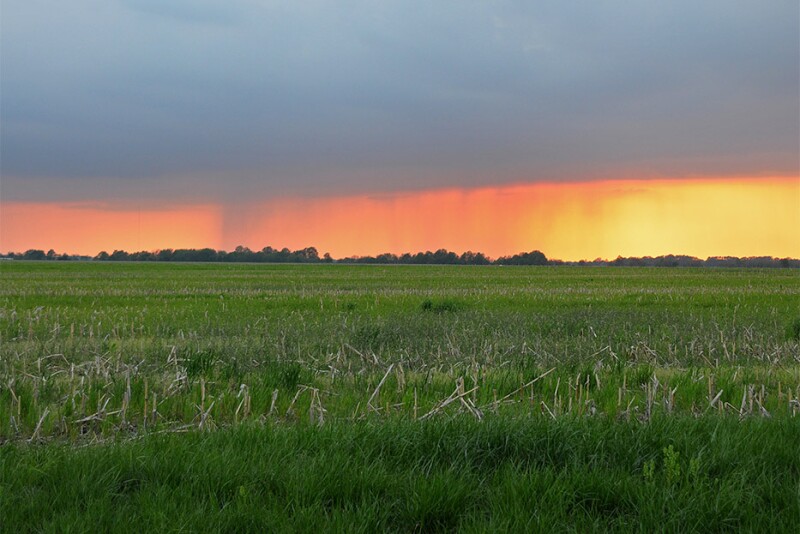Severe thunderstorms affected parts of northern Illinois, northern Indiana, northern Ohio, and southern Michigan on Sunday. While the system did come along with some wind and hail damage, it also delivered beneficial rainfall to areas dealing with moderate, severe, and extreme drought. “Notably, extreme (D3) and severe drought coverage decreased in northern Illinois and southern Lower Michigan, due to improved conditions after the storms,” today’s National Drought Monitor detailed. But other Midwest areas continued to dry out. “Severe drought expanded across parts of northern Iowa, southern Minnesota, and northwest Minnesota, due to worsening precipitation deficits and vegetation conditions,” today’s update says.
Iowa remains 76.2% covered by moderate to severe drought, with another 16.3% of the state dealing with abnormal dryness. All of Minnesota is covered by abnormal dryness or drought, with the key southern areas of the state particularly hard-hit. On the other hand, Illinois is 76.4% drought/dryness free, with drought confined to the state’s northernmost counties. Rains over the next 10 days are again expected to favor eastern and southern areas of the Midwest, and forecasts for July and August point to building stress in the western Corn Belt, according to world Weather Inc.
Today’s update described rainfall the week ended June 22 as “paltry” for the High Plains region that continues to struggle with dryness and drought. In addition, temperatures were warmer than usual across much of Nebraska, Kansas, and western South Dakota. This combination led to the worsening of abnormal dryness and drought in these areas, with some extreme drought developing along the Missouri River in northern Nebraska and southern South Dakota. Extreme and exceptional drought still encompass North Dakota, with drought also expanding and intensifying in spring-wheat producing Wyoming. A striking 63.6% of North Dakota is impacted by extreme or exceptional drought, and prospects for relief are limited.
The Tropical Storm Claudette made landfall in the Central Gulf Coast last weekend, bringing “widespread improvement to drought conditions in North Carolina and South Carolina, as well as improved conditions in northern Florida and southern Georgia,” according to today’s National Drought Monitor. But in areas of the South not impacted by Claudette like the Texas Panhandle and northwest Oklahoma, rainfall was scarce and temperatures were warm.

